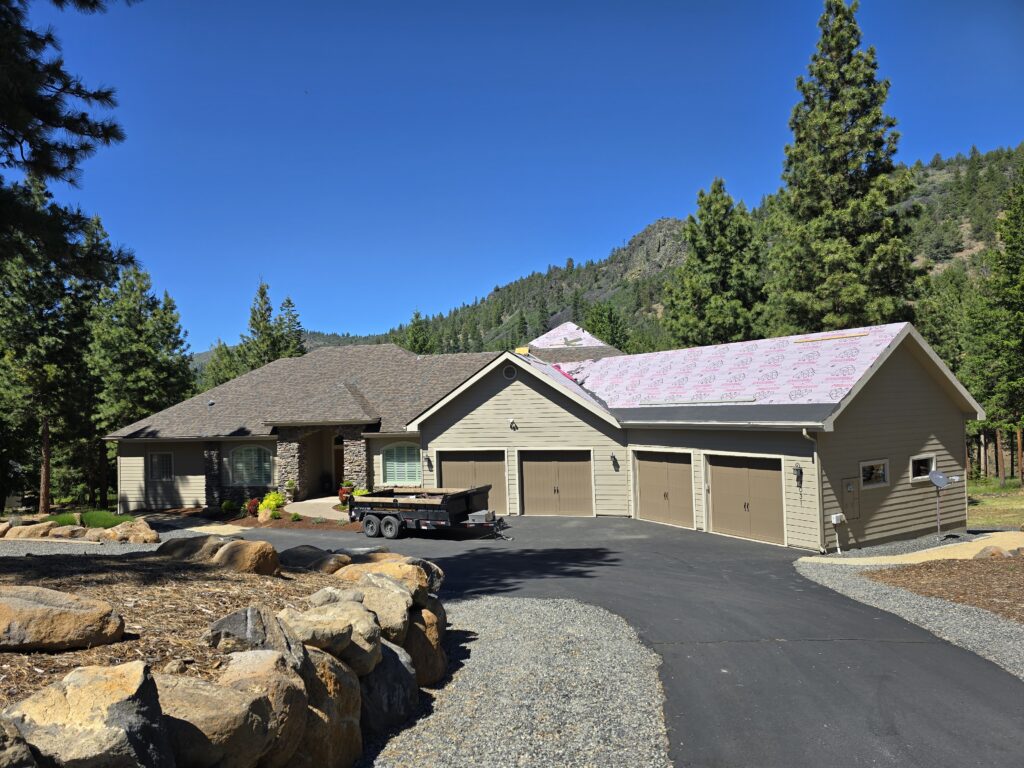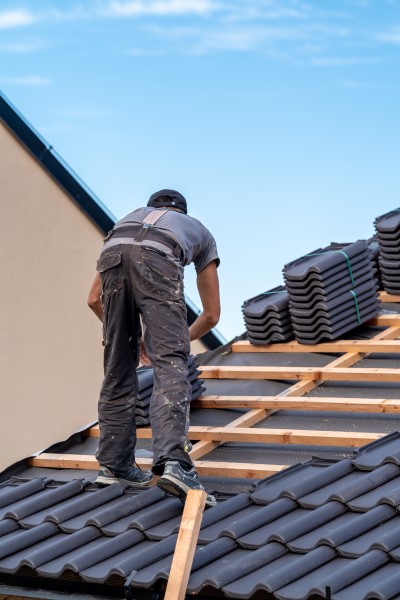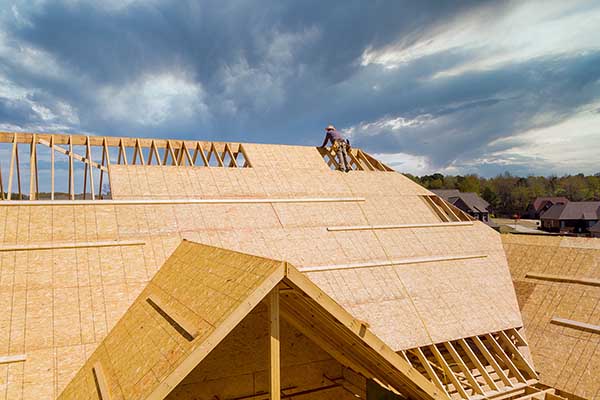How to Extend the Lifespan of Your Roof: Maintenance Tips for Every Season
Wright's Roofing & Construction, Inc.
Locally Owned • Free Estimates • 24/7 Emergency Service
Free Estimates
Understanding Oregon’s Climate and Its Impact on Roofing
Your roof is one of the most important parts of your home, protecting you and your family from the elements. However, it’s also one of the most exposed areas, constantly taking on harsh weather, debris, and fluctuating temperatures. To keep your roof in excellent condition and extend its lifespan, it’s essential to practice regular maintenance throughout the year. This blog post will guide you through easy yet effective seasonal maintenance tips, including advice tailored to Oregon’s unique climate, to ensure your roof lasts as long as possible.
Why Roof Maintenance Matters
Before diving into seasonal maintenance tips, it’s important to understand why regular upkeep is crucial for your roof. Whether you have a shingle, metal, or flat roof, all roofing materials degrade over time due to weather exposure, aging, and wear and tear. Consistent maintenance helps prevent small issues from becoming costly repairs or even full roof replacements. Furthermore, proper care improves energy efficiency, protects your home from leaks and structural damage, and preserves your roof’s aesthetic appeal.
Oregon’s Climate and Its Impact on Your Roof
Oregon’s climate is diverse, with varying weather conditions across the state. From the heavy rainfall in western Oregon to the more arid conditions in eastern parts, your roof faces different challenges depending on where you live. The state’s infamous rainy seasons, occasional snow, and falling debris (such as leaves and branches) can take a toll on your roofing system. Understanding the regional climate allows you to tailor your roof maintenance practices to the specific needs of your area.
Let’s break down the essential maintenance tips for each season to help keep your roof in top condition, year after year.
Spring Roof Maintenance Tips
Spring is the perfect time for a thorough inspection after winter’s harsh conditions. In Oregon, spring often brings heavy rains and fluctuating temperatures, which means that your roof needs to be prepared for moisture and the growth of moss and algae.
Inspect for Winter Damage
Winter weather can cause various issues, including cracked shingles, leaks, and ice dam formation. As soon as temperatures rise, conduct a visual inspection of your roof. Look for:
- Broken or missing shingles
- Cracks in metal flashing or other roof features
- Water spots or signs of leaks in your attic or ceilings
If you spot any damage, address it promptly. Even small issues, if left unattended, can lead to larger, more expensive problems.
Clean Gutters and Downspouts
During the winter, leaves, twigs, and other debris can accumulate in your gutters, preventing proper water drainage. Blocked gutters can lead to water pooling on your roof or around your foundation, causing significant structural damage. Clean your gutters and downspouts to ensure rainwater flows freely away from your home.
Remove Moss and Algae Growth
Oregon’s damp climate, particularly in western regions, can cause moss and algae to thrive on your roof. While they may look harmless, moss and algae can lift shingles and trap moisture, leading to rot and leaks. Use a gentle roof cleaner or a solution of water and bleach to carefully remove moss and algae. Avoid pressure washing, as it can damage your shingles.
Trim Overhanging Branches
Trees near your roof can drop debris, clogging your gutters and allowing moss to grow in shady areas. Overhanging branches can also scrape and damage your shingles. Trim back any branches that hang over your roof to prevent damage and keep your roof dry and clean.
Summer Roof Maintenance Tips
Summer in Oregon can bring dry conditions and warm temperatures, making it an ideal time for larger repair projects. The dry weather allows roofing materials to settle and seal properly, reducing the risk of further issues down the line.
Schedule a Professional Roof Inspection
While you can do a visual inspection yourself, it’s a good idea to schedule a professional roof inspection at least once a year. A licensed roofer can spot subtle issues that you might miss, such as damaged flashing or small leaks, and provide expert advice on maintenance and repairs.
Check for Signs of Wear and Tear
As summer temperatures rise, your roof expands and contracts, which can lead to wear and tear over time. Check for:
- Curling or buckling shingles
- Rust or corrosion on metal roofs
- Gaps around vents, chimneys, and skylights
If you notice any signs of aging or damage, consider having repairs done during the summer when conditions are optimal for roofing work.

Inspect Ventilation and Insulation
Proper attic ventilation and insulation are crucial for preventing heat buildup during the summer months. Inadequate ventilation can cause your roof to overheat, which accelerates wear on roofing materials and can raise your cooling costs. Make sure your attic has adequate airflow and that insulation is in good condition.
Repair or Replace Damaged Shingles
Summer is the best time to repair or replace any damaged shingles, as the warm weather helps seal them properly to the roof. Addressing these issues in the summer prevents further damage during the fall and winter months.
Fall Roof Maintenance Tips
As Oregon heads into the rainy season, fall is the time to prepare your roof for the upcoming wet weather. Fall maintenance focuses on waterproofing and ensuring your roof is ready to handle heavy rainfall and potential storms.
Clean Gutters Again
Leaves fall in abundance during autumn, making it essential to clean your gutters again before the rainy season. Clogged gutters can lead to water damage, so ensure they’re clear and in good condition.
Inspect Flashing and Seals
Flashing around chimneys, vents, and skylights is one of the most vulnerable areas of your roof. These areas can develop cracks or gaps, allowing water to seep into your home. Inspect all flashing and seals, and repair any damage to prevent leaks during heavy rains.
Check for Loose or Missing Shingles
Fall winds and storms can easily lift and dislodge shingles. Inspect your roof for any loose or missing shingles and have them secured or replaced before the rainy season begins.
Install Gutter Guards
If you live in an area with heavy foliage, consider installing gutter guards to prevent leaves and debris from clogging your gutters. Gutter guards can save you the hassle of frequent cleanings and reduce the risk of water damage to your roof and home.
Inspect Roof Valleys
Roof valleys, where two roof slopes meet, are particularly prone to water buildup. Ensure that these areas are free from debris and that shingles are intact. If water can’t flow freely through the valleys, it may pool and cause leaks.

Wrights Roofing & Construction, Inc.
Provided me with what I needed to cover my roof when it started leaking in multiple areas till I can get it fixed. They where there for me when no one else was. I recommend them 100% they great people who have a heart.
-Shaina B.
Winter Roof Maintenance Tips
Winter in Oregon can bring snow, ice, and freezing temperatures, particularly in the mountainous or eastern regions of the state. Winter maintenance focuses on preventing ice damage and managing the effects of cold weather.
Prevent Ice Dams
Ice dams occur when snow on the roof melts and refreezes at the edges, blocking drainage and causing water to seep under shingles. To prevent ice dams:
- Ensure your attic is properly insulated to keep heat from escaping and melting snow unevenly.
- Make sure your roof’s drainage system, including gutters and downspouts, is clear.
- Use a roof rake to carefully remove heavy snow from your roof after major snowfalls.
Monitor for Snow Buildup
If you live in an area that experiences heavy snowfall, monitor your roof for excessive snow buildup. Too much snow can put weight on your roof, potentially leading to structural damage or collapse. Use a roof rake to remove excess snow or consider hiring professionals for the job.
Inspect for Icicles and Ice Formation
Icicles hanging from your roof may look pretty, but they’re a sign of poor drainage and can lead to water damage. Break off small icicles and address any drainage issues, such as clogged gutters, to prevent more serious problems.

Perform Regular Indoor Inspections
During the winter, it’s a good idea to inspect your attic and ceilings for any signs of water leaks or moisture buildup. If you notice water stains or mold, it could indicate that water is seeping through your roof. Address these issues promptly to avoid further damage.
Schedule Professional Roofing Maintenance Now
Maintaining your roof throughout the year doesn’t have to be complicated. By following these simple, season-specific maintenance tips, you can extend the lifespan of your roof and protect your home from the elements. Regular inspections, timely repairs, and proper care tailored to Oregon’s climate will ensure your roof remains in excellent condition for years to come.
At Wright’s Roofing & Construction, Inc., we’re committed to helping homeowners maintain their roofs and avoid costly repairs. If you’re in need of professional roof inspections, repairs, or replacements, don’t hesitate to contact us. Our experienced team is ready to provide expert advice and top-quality service to keep your roof in great shape, no matter the season.
Wright's Roofing & Construction, Inc.
Locally Owned
Licensed, Bonded, Insured
Extended Warranties*
24/7 Emergency Service
Free Estimates
Klamath Falls, OR Top Roofing Contractor

